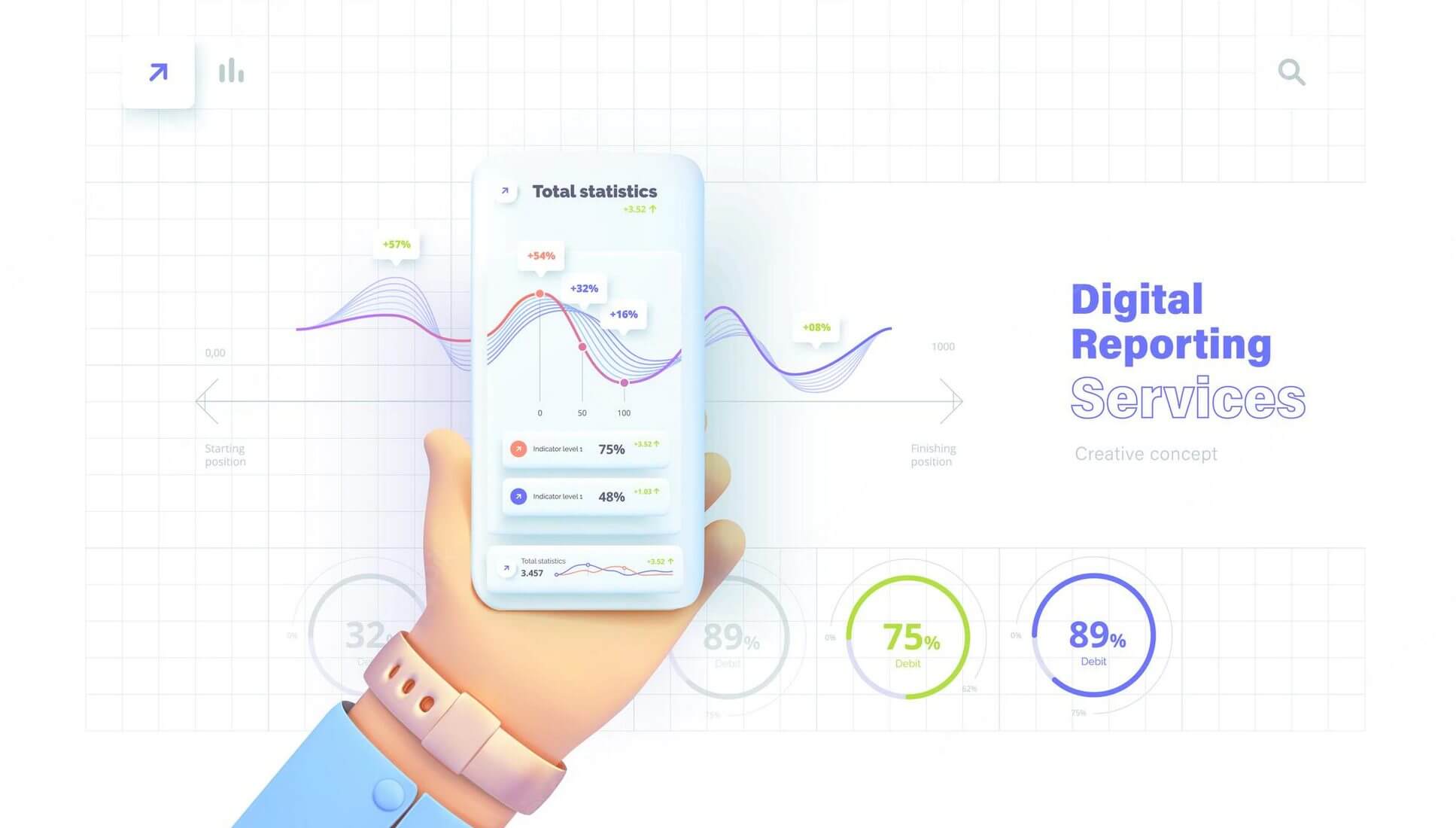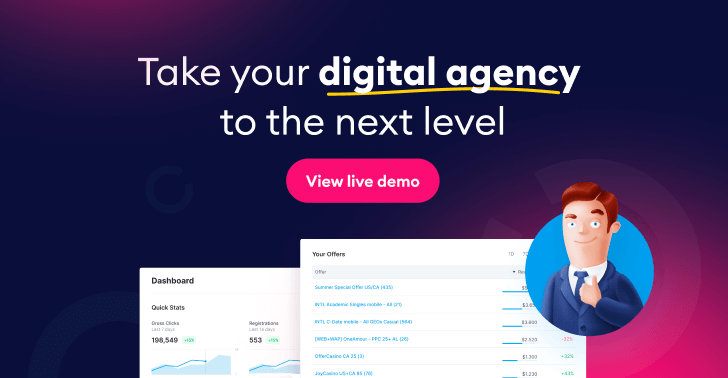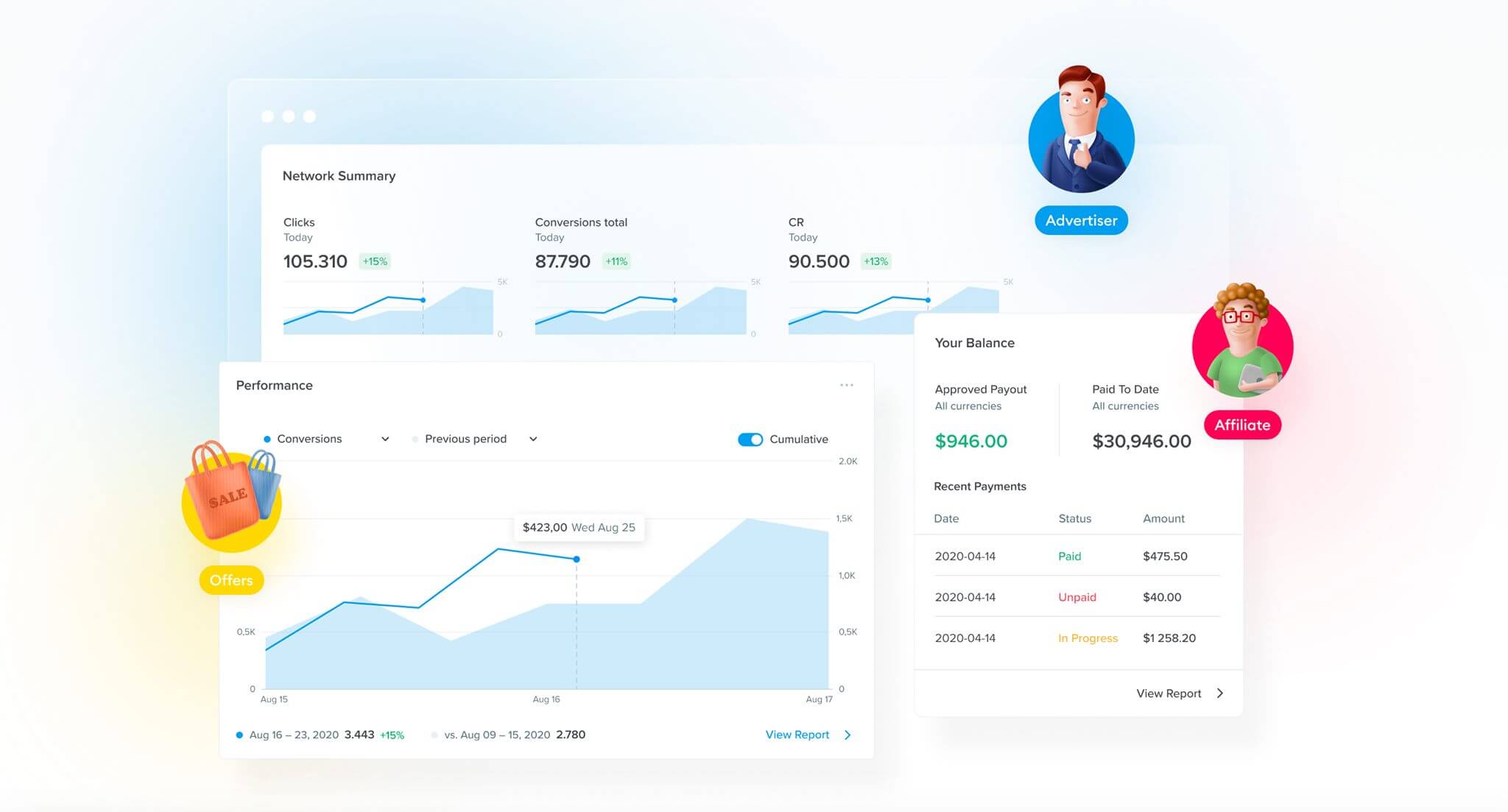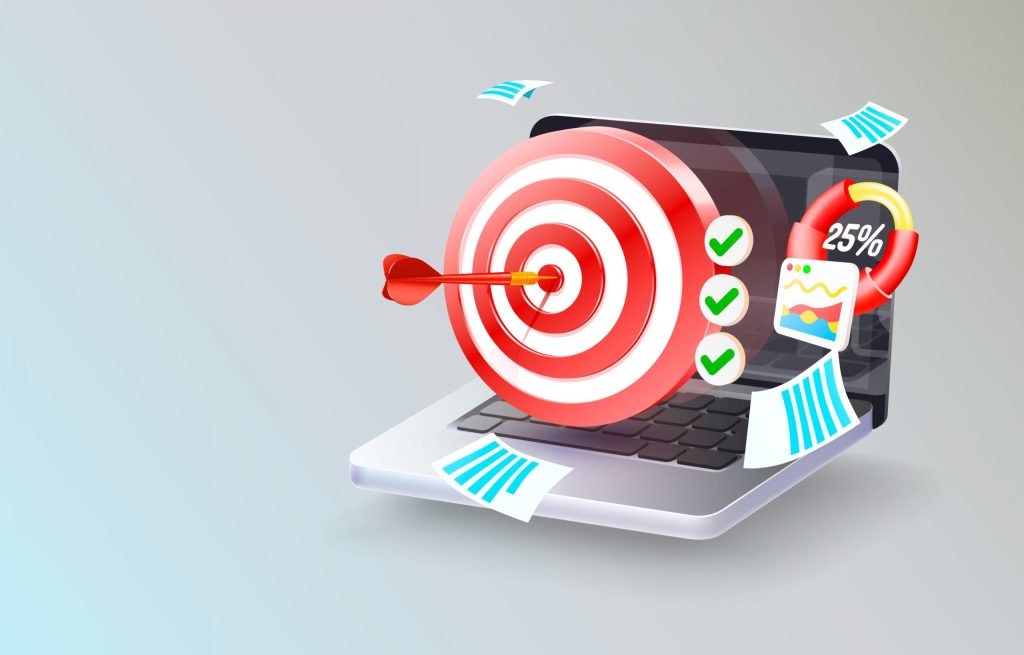Performance marketing could be the solution if you want a results-oriented plan for your digital advertising. In recent decades, this method has changed how marketers and publishers interact and how ads reach their target audience.
In today’s data-driven world, performance marketing allows you to reach your target audience at scale while analyzing how effective your campaigns are.
What Exactly Is Performance Marketing?
As the name implies, this marketing style is performance-based, with marketers paying based on how well an ad performs or how many people view it. Traditionally, performance marketing primarily covers PPC (pay per click) or CPC (cost per click) campaigns. Still, it now includes impressions or views on a CPM (cost per thousand) basis, in addition to engagement or click-through rates.
As a marketer, you place ads and only pay when the required action is taken. It’s a highly attractive arrangement because you know you’re paying for high-quality views or other outcomes. Depending on your pricing mechanism, you may earn some free brand exposure from viewers who do not click on the ad, but you can get a substantial return on each produced click or view.
Targeted omnichannel campaigns are an important approach to drive results through performance marketing. You may identify engaged audience members wherever they are online by targeting your ads across different channels such as:
- video,
- display ads,
- social, search,
- audio, native, and so on.
When advertisers pay for impressions, the actual measure of success is whether the intended audience viewed the ad (or not).
How Does Performance Marketing Work?
Three people who are involved in digital performance marketing, each with a defined interest in promoting a successful advertising campaign. They include:
- Advertisers
Customers frequently visit websites and social media channels. They also use connected TVs and audio platforms to stream content. A marketer typically uses cross-channel marketing campaigns to reach and engage with their target audience online via a digital advertising campaign. Performance marketing is the best solution if the campaign’s purpose is to produce leads and improve sales and conversions (rather than brand awareness) by engaging consumers to take a specific action and make them convert.
- Publishers
Any company that owns and manages a website that sells digital advertising on it is considered a publisher. Depending on the website’s content, each publisher provides access to a certain set of readers or subscribers, which may include a specialized or a large audience with distinct parts. Advertisers bid on ad space with these publications for the audience members they want to target, either in a private marketplace transaction between the marketer and publisher or programmatically. When members of the advertiser’s target audience visit the publisher’s website, the ads are displayed to them.

Advertising across many marketing channels allows you to reach a wider prospective client pool while also keeping your audience engaged across different screens and keeping your brand in front of them. To interact with your audience across numerous channels, you may start with standard banner ads (display) and then go into social media, sponsored search, and CTV ads.
- Agencies
Advertisers who do not have direct ties with publishers and platforms sometimes hire agencies to execute media buying and selling on their behalf. The advertiser’s relationship with their media partner might vary, but in performance marketing, the agency is responsible for ensuring that the ad performs and is seen by the marketer’s target demographic.

Scaleo, for example, provides access to several platforms integrated via API, allowing you to access them all in one spot. It also provides strategic advice for programmatic media buying as well as a uniform reporting interface, allowing marketers to determine which of their channels or creatives are working best and reaching the right individuals. Since Scaleo allows you to analyze all incoming traffic, you can be sure you are not leaving any money on the table.
Payment Methods Used in Performance Marketing
Payments in performance and programmatic media buying are often determined at the start of an ad campaign. The publisher or platform can determine the payment model, and advertisers can pick how much they are ready to bid for the desired result. The two basic payment methods are:
- Pay per click (PPC): The advertiser is compensated for clicks that lead to the advertiser’s landing page. This technique is employed in paid search engine results.
- Cost per click (CPC): Another method to describe PPC is as follows. Also, a KPI (key performance indicator) is used by marketers to determine how well their media buys are performing. If a sponsored search campaign has a CPC of $400 and a display campaign has a CPC of $20, the advertiser may decide to shift their marketing expenditure to the display channel for greater efficiency.
- Cost per thousand (CPM): CPM, the most basic and widely used pricing model, is a computation of the amount a marketer pays per 1,000 impressions. Rather than paying for someone to click on an ad, the advertiser pays every time the ad pops up to someone in their target audience. When the campaign aims to raise product or brand recognition, this strategy can be effective. It can also engage folks who have shown a strong interest in your brand. CPM is useful for paid social media, programmatic advertising, and a variety of other platforms. When paying for views, intelligent targeting is essential to assure impressions and outcomes from interested audience members.
Performance Marketing Channels
An advertiser can use a variety of performance marketing channels, and the majority of performance marketing methods can be implemented programmatically. In many circumstances, the material is deliberately provided to platforms and individual consumers so that marketers only pay for valuable impressions or clicks.
High-impact images and formats are two other tried-and-true digital marketing performance methods. Making designs stand out in a world where most web users aim to avoid ads can increase views, clicks, and transactions. Advertising formats should also be diversified and appealing. Videos, mobile-first designs, digital audio ads, customized Dynamic Creative Optimization (DCO), and other ad formats make it possible for your company to create a rich, multi-channel online experience. Engaging formats ensure that after ads reach the correct people, those people are eager to discover more.
Social Media Ads
In the U.S. alone, 72% of the population uses at least one social media platform. On social media, most marketers may find engaged audience members. Each platform has a distinct market niche.
Instagram and Facebook have the most diverse user bases, while other platforms may provide targeted advertising for certain purposes. Pinterest users are looking for distinctive products, making them ideal for e-commerce. B2B marketers may concentrate their efforts on LinkedIn, where professionals encourage personal career advancement and seek business advice. TikTok and Snapchat are gaining popularity among millennials and Generation Z users.
Social media is frequently used to enhance traffic, promote interaction, create leads or sales, and raise brand exposure. Because organic reach is limited, paid content is essential for improving post-performance. Advertisers can track the following performance KPIs in social media performance marketing:
- Impressions
- Likes
- Comments
- Shares
- Clicks
- Sales
- Completed contact forms
- Checkouts
While there are other indicators that may be tracked on social media, CPM is the most commonly utilized payment model. Social media networks have numerous options for ensuring that those impressions originate from people who will most likely be interested in your products.
Programmatic Display Ads
Programmatic media buying is one of the most effective strategies to drive outcomes from a marketing campaign in 2023. While practically all forms of performance marketing may now be done programmatically, display ads are among the most well-known.
You can use advanced contextual targeting by placing banner ads through specified publications. Publishers collect a variety of audience and segmentation data about their readers in order to place highly targeted ads.
Native Advertising
Native advertising is advertising that does not appear to be an ad. Instead, it mimics the content and functionality of the site or page on which it is put. Native ads are frequently presented as suggested articles at the bottom of a news or social site, but they can also show in-feed on social networking platforms. Native advertising can also be purchased or sold programmatically, allowing consumers to see native ads depending on their interests and viewing history.
Rather than utilizing explicit sales language, good native advertising educates and informs clients at the top of the sales funnel. By picking on customers’ interests, ideal opportunities for re-targeting to help advance the user through the consumer journey are created.
Native ads sometimes receive more clicks than standard advertising since they mimic the other content on the site. CPM advertising is the most common type.
Search Engine Marketing (SEM)
PPC and Paid Search advertising, often known as search engine marketing, mixes native advertising through sponsored search results with other forms of marketing. PPC ads appear at the top of the search results page. Marketers utilize search engine optimization in addition to performance-based ads (SEO). This strategy relies on the search engine’s algorithm to gain organic clicks.
While SEO is not required to follow a performance marketing model, some marketers leverage the results of SEO campaigns to pay SEM vendors commissions. Hard metrics can be used to analyze both organic and paid search marketing performance to understand success.
High Impact Mobile Advertising
Mobile devices are among the most popular for performance marketing. They go with their owners, as the name implies. As a result, you may reach your customers wherever they are at any time. As a result, most consumers are bombarded with mobile ads throughout the day. It’s enough to make most people put up an imaginary barrier, disregarding every pop-up their phones send their way. Enter high-impact mobile ads.
They’re a new breed of eye-catching smartphone ads.
They increase engagement by utilizing all of the features available on our pocket-sized touchscreens. All of the most popular apps delight and entice consumers. This formula is used in high-impact mobile ads, which include swipes, taps, and other interactive components. They break through the visual chaos of the digital landscape with eye-catching designs and smart movement.
Mobile experience designers create engaging concepts based on your target audience’s interest. Meanwhile, advanced programmatic advertising strategies get their messages in front of the correct people.
Video and CTV
Engaging, high-production-value video ads have a high level of engagement. Video format is a powerful tool for increasing brand awareness and capturing upper-funnel audience members. Like other performance marketing forms, video ads perform best when deployed programmatically. They can be included within a video or played before or after other video content. They may also appear in display ads or mobile games.
What Are the Benefits of Performance Marketing?
What distinguishes performance marketing? The name says it all: performance. It is a method advertisers employ for effective marketing focused on return on investment (ROI). It encourages measurable outcomes and makes measurements easier to track.
The following are the top five advantages of performance marketing:
- Track Performance
The beauty of performance marketing is that it is completely measurable. Dashboards like Scaleo’s one allow you to track and view performance to provide a comprehensive picture of how your ads perform across platforms.

Because you pay per impression or click, tracking ad spend and optimizing your media buy becomes much easier. You can then calculate cost-per-action to measure how many views it takes to generate one click, one lead, or any other performance metrics you want to track.
The path to conversion has become less mysterious as marketing has become more digital.
While standard, linear TV advertising can be difficult to measure, performance marketing is different.
Performance marketing allows a marketer to improve reach and provides trackable indicators, allowing the advertiser to see which ones are producing conversions. Computing ROI consistently is critical for marketers who are constantly challenged to justify their media spending.
- Pay for Results
The last thing a marketer wants is for their ad to fall on deaf ears. Worse, you may be targeting users who would never convert. Publishers have incentives with programmatic advertising to have their ads noticed by the proper consumers or risk losing future ad placements. As a result, ads can generate more targeted impressions while also improving conversion rates.
Because marketers pay for outcomes, the danger of wasting ad expenditure is minimal. Marketers can be confident that they are paying for viewer interactions even if the cost-per-impression climbs. According to a Performance Marketing Association report, marketers can expect a 12:1 return on investment through performance marketing. This means that every dollar invested in the marketing channel drove $12 in e-commerce revenue.
- Connect With New and Hard-to-Reach Audiences
Social media, CTV ads, audio ads, native ads, display ads, and search marketing are all forms of performance marketing. These expose your brand to the viewers on each platform, allowing you to enter new markets. Content filtered by trustworthy publications and the channels your consumers prefer can reach viewers who block or ignore the majority of internet ads.
Working with a marketing dashboard allows ads to be placed across the web on a variety of platforms. As a result, you can dramatically broaden your audience.
- Optimize Campaigns as They Go
Because performance marketing is digital, you can track performance in real-time. As a result, you can modify ads over the course of a campaign. With adverts in several locations across multiple channels, you can identify where ads perform well and focus more on those platforms. If you see that one tagline performs better than the others, you can alter it mid-campaign.
Depending on the metrics you’ve selected, your ad placement will be optimized on the publisher’s end. For example, if the bid matches the conditions, a search engine will frequently show an ad to generate the desired amount of clicks during the campaign’s term.
- Budget Effectively
Marketers must establish objectives at the start of a performance-driven campaign. As a result, these advertisements become easier to plan. While bidding on each platform differs, most will request an ideal cost per impression and total impressions objective. While pricing may differ throughout the course of a campaign, this method makes estimating and tracking spending simple. You can also set a spending limit on many platforms.
Conclusion: Contact Scaleo
Are you seeking an omnichannel performance solution as focused on performance as you are?
Based on our case studies, when you collaborate with us, you’ll experience a 5%-20% rise in performance across all your marketing channels.
We want to help you increase conversions with your audience across all platforms and have complete control over your ad performance through Scaleo’s dashboard.

Smarter targeting, combined with our best Anti-Fraud LogicTM engine and performance marketing tools. When it comes to numbers, we provide a clear picture of your campaigns’ performance. We’ll manage your campaigns throughout their lifecycles to brind you the best possible results.
Does that sound right to you? Let’s chat! Sign up for an instant free trial and tell our representatives about your business case and we will tailor a performance marketing solution that fits your needs.
Last Updated on September 22, 2022




